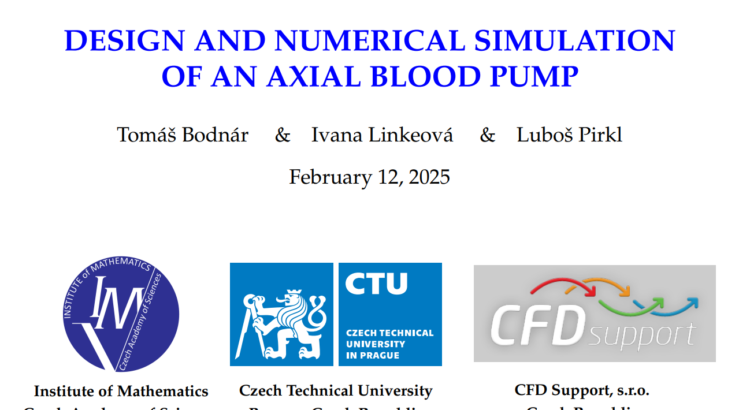New research program on blood pumps
We start a new collaboration on a research program on axial blood pumps. Together with colleagues from the Faculty of Mechanical Engineering at Czech Technical University in Prague, and the Institute of Mathematics at the Czech Academy of Sciences, we’re going to investigate design, topology, process automation, complex physics, blood rheology, hemolysis, and AI for turbomachinery applications.
We just kicked it off with an initial paper. This paper shows the first version of a new geometrical and computational model of a Ventricular Assist Device (VAD). The main aim and purpose of this model is to serve as a computational test case and benchmark for mutual cross-comparison of numerical simulations employing different grids, solvers, and additional mathematical model extensions. The simplified VAD was designed as a fully parametric adjustable geometry, allowing for easy change of the essential model shape parameters to assess their effect on the VAD’s performance. The description of the newly developed VAD geometry is presented, briefly describing its structure and main shape parameters. The first numerical simulations of the flow in the resulting VAD model are presented, based on the OpenFOAM finite-volume solver implemented in the TCAE Engineering Simulation Environment. The presented first numerical results show the applicability of the newly developed VAD’s model geometry for computational fluid dynamics (CFD) evaluation and benchmarking.

